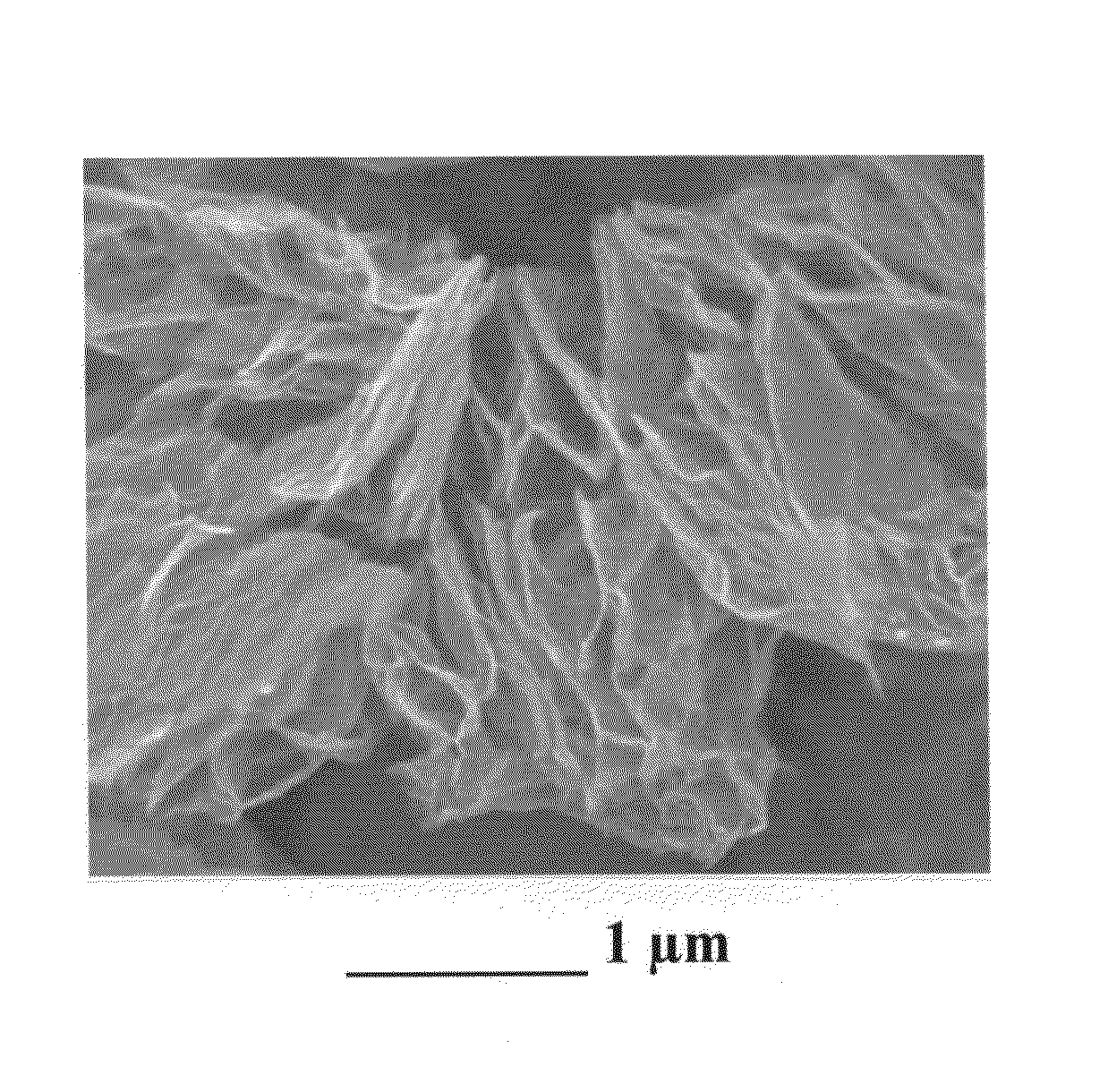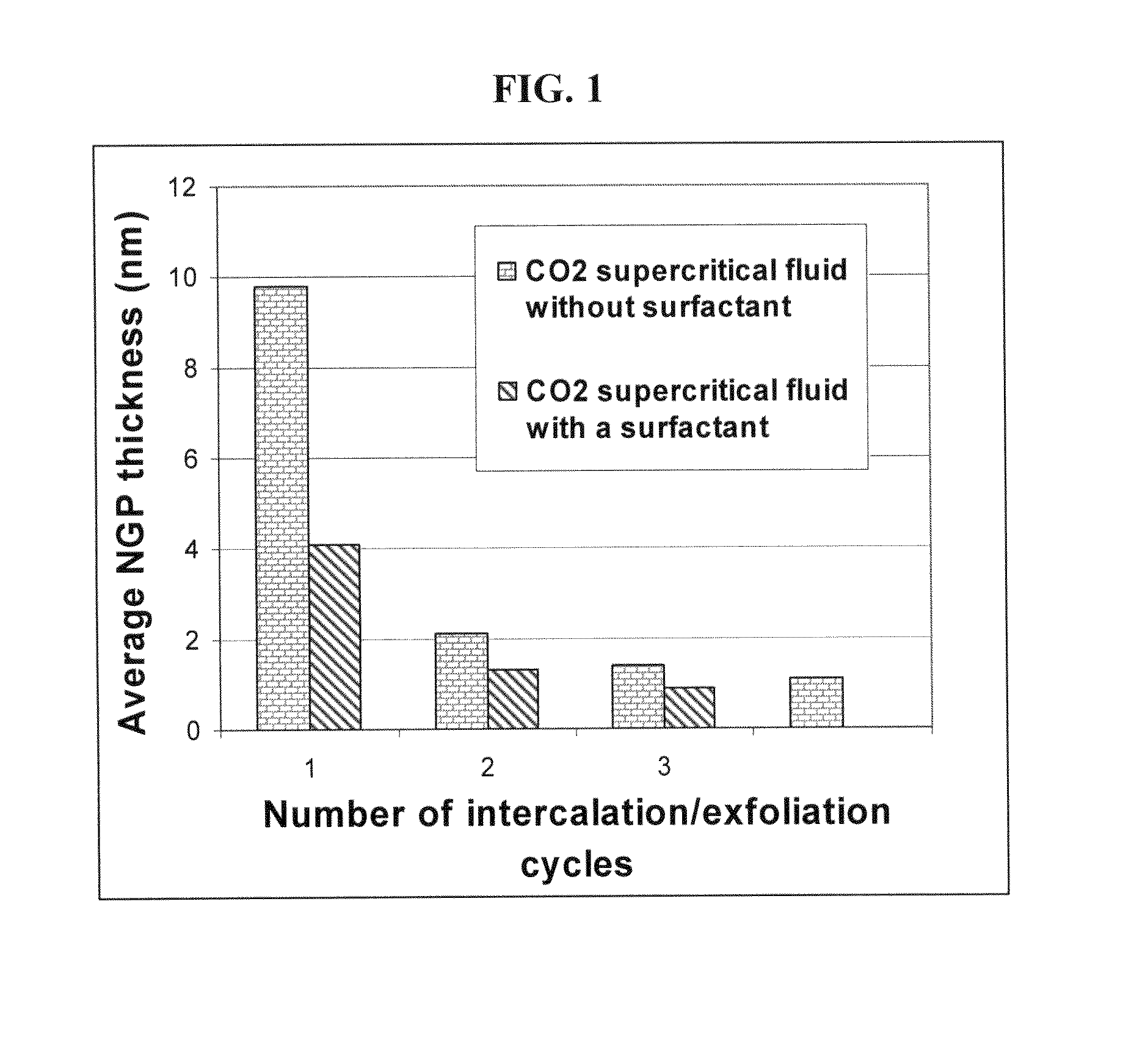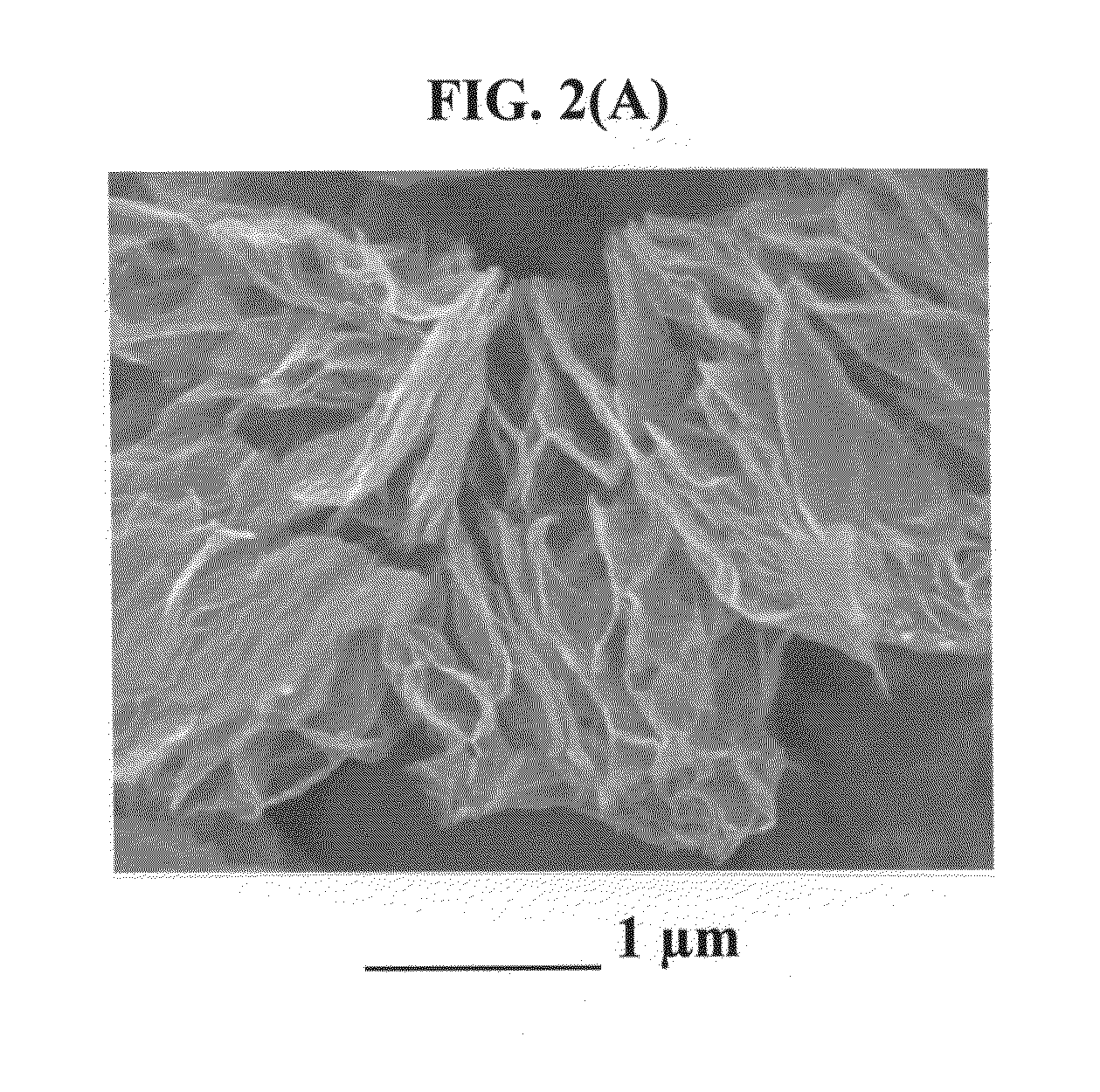Supercritical fluid process for producing nano graphene platelets
a technology of nano graphene and supercritical fluid, which is applied in the direction of single-layer graphene, bulk chemical production, non-metal conductors, etc., can solve the problems of tedious process, inability to disperse go platelets in water or other solvents, and inability to produce nano graphene sheets through these methods. achieve good electrical conductivity
- Summary
- Abstract
- Description
- Claims
- Application Information
AI Technical Summary
Benefits of technology
Problems solved by technology
Method used
Image
Examples
example 1
Preparation of Pristine NGPs from Natural Graphite Using CO2 Supercritical Fluids
[0149]A natural graphite sample (approximately 5 grams) was placed in a 100 milliliter high-pressure vessel. The vessel was equipped with security clamps and rings that enable isolation of the vessel interior from the atmosphere. The vessel was in fluid communication with high-pressure CO2 by way of piping means and controlled or regulated by valves. A heating jacket was wrapped around the vessel to achieve and maintain the critical temperature of carbon dioxide. High-pressure carbon dioxide was introduced into the vessel and maintained at approximately 1,100 psig (7.58 MPa). Subsequently, the vessel was heated to about 70° C. at which the supercritical conditions of carbon dioxide were achieved and maintained for about 3 hours, allowing CO2 to diffuse into inter-graphene spaces. Then, the vessel was immediately depressurized “catastrophically’ at a rate of about 3 milliliters per second. This was accom...
example 2
Repeated Intercalation and Exfoliation with CO2 Supercritical Fluids
[0151]Approximately two-thirds of Sample 1-A was removed from the pressure vessel. The remaining NGPs were subjected to another cycle of supercritical CO2 intercalation and de-pressurization treatments (i.e., the above procedures were repeated with a pressure of 7.5 MPa and temperature 65° C.), yielding much thinner NGPs with an average thickness of 2.1 nm (identified as Sample 2). The specific surface area, as measured by the BET method, was approximately 430 m2 / g. TEM and AFM examinations indicated that there were many single-layer graphene sheets in this sample. The electrical conductivity of a thin film made from these ultra-thin NGPs was 1,450 S / cm.
example 3
Preparation of Pristine NGPs from Natural Graphite Using CO2 Supercritical Fluids Containing a Surfactant
[0152]Sample 3 was prepared under essentially identical supercritical CO2 conditions as Sample 1-A, with the exception that a small amount of surfactant (approximately 0.05 grams of Zonyl® FSO) was mixed with 5 grams of natural graphite before the mixture was sealed in the pressure vessel. The resulting NGPs have a surprisingly low average thickness, 4.1 nm. After the pressurization and de-pressurization procedures were repeated for two more cycles, the resulting NGPs had an average thickness less than 1.0 nm, indicating that a majority of the NGPs were single-layer or double-layer sheets. The specific surface area of this sample after a repeated cycle was approximately 900 m2 / g. It may be noted that a sample of all single-layer graphene sheets should exhibit a specific surface area of >2,670 m2 / g. It is clear that the presence of a surfactant or dispersing agent promotes separat...
PUM
| Property | Measurement | Unit |
|---|---|---|
| electrical conductivity | aaaaa | aaaaa |
| thickness | aaaaa | aaaaa |
| electrical conductivity | aaaaa | aaaaa |
Abstract
Description
Claims
Application Information
 Login to View More
Login to View More - R&D
- Intellectual Property
- Life Sciences
- Materials
- Tech Scout
- Unparalleled Data Quality
- Higher Quality Content
- 60% Fewer Hallucinations
Browse by: Latest US Patents, China's latest patents, Technical Efficacy Thesaurus, Application Domain, Technology Topic, Popular Technical Reports.
© 2025 PatSnap. All rights reserved.Legal|Privacy policy|Modern Slavery Act Transparency Statement|Sitemap|About US| Contact US: help@patsnap.com



